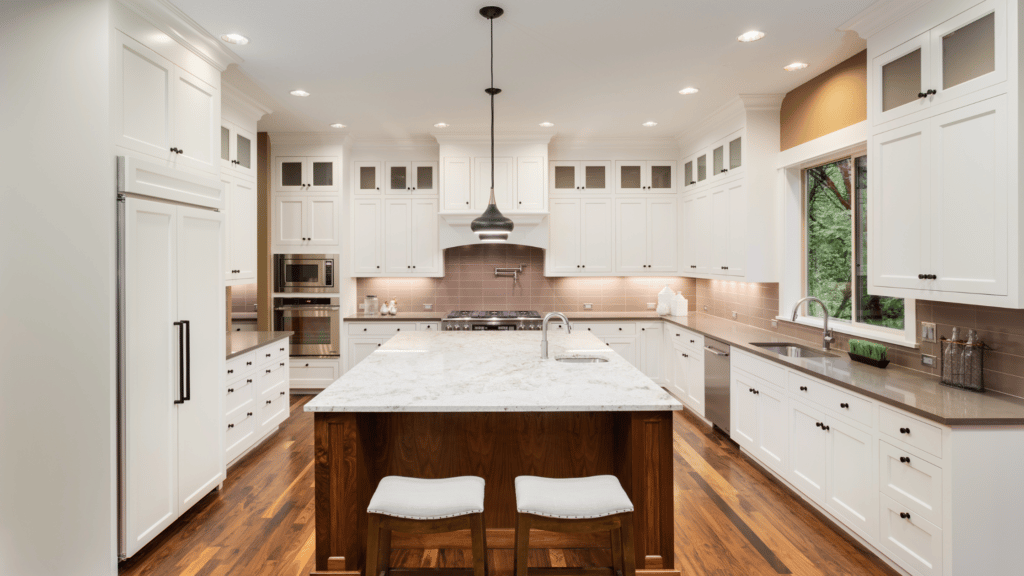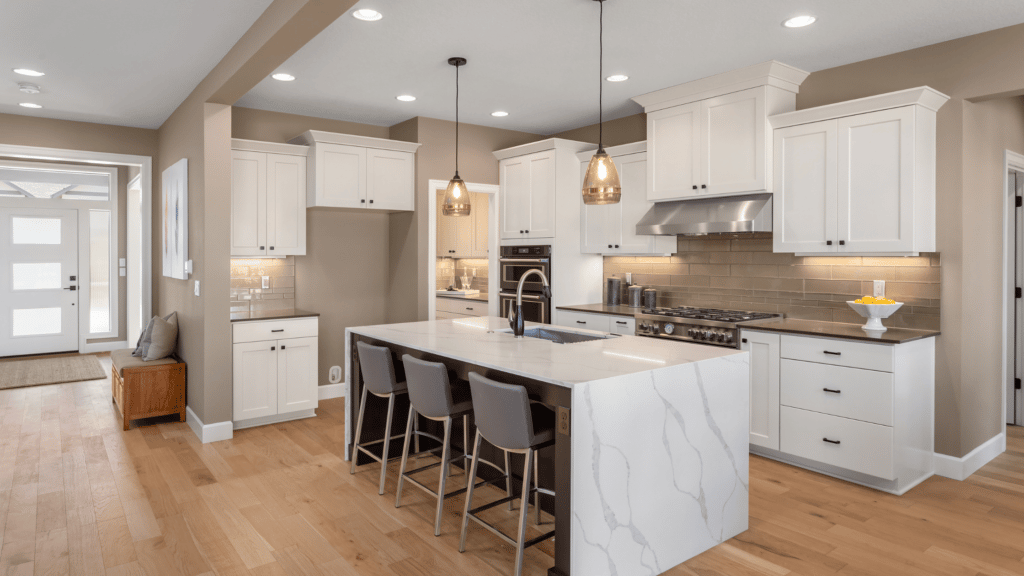You have probably been learning about the importance of getting a quality kitchen countertops fabricator and installer, either from our site or even from different sources on the web. However, are you able to identify a “quality” installation? How can you differentiate between a tacky installation and a great one?
In this post, we are going to look at characteristics of a perfect kitchen countertop installation and when to be concerned.
Are the edges polished?
This practice is not very common, despite the fact that it is profoundly desired. For example, let’s say you are sitting in a bar. You’ll end up folding your fingers over the edges right? At some point at least. Well-polished and cleaned undersides feel smooth to your touch. This is the most inconspicuous detail that marks a good installation.

Are creases on the installed countertop smooth, level, and narrow?
Every completed kitchen countertop installation will have creases. The issue here is to have the creases blend in as impeccably as possible. They should not be excessively visible, should be smooth to the touch, and measure no less than 1/16-inch. They should be pretty much inconspicuous and made using paste.
Are the installed countertops evened out?
A crafty kitchen countertop fabricator and installer would know the difference between an evened out countertop and a level one. Their slabs should be shimmed and evened out before the installation. After a perfect kitchen countertop installation, the countertop should require no support to remain set up. A little globule of silicone caulk smeared around the outer side of the countertop’s edge is all that you require to keep countertops in place.
Were the sinks correctly installed before the end of the project?
One of the clearest characteristics of a mediocre installation is carelessly installed sinks. In some cases, all that is needed for under-mount sinks is just a direct connection to a cabinet’s sides to hold them in place. At other times, you may need to stick them to the stone beneath directly. A little amount of silicone is needed to keep the sink watertight and to give mass to the holding strength. If you can see globs of paste around the edge of your sink bowl, prepare to reattach your bowl in future.
Did the kitchen countertop installer rod the top?
“Rodding” a kitchen countertop is making a channel on the underside of kitchen counters for cutting the openings for the sink and cooktops. The installer will then stick steel bars into the channels making sure to keep the top safe from breaking during installation. Although this is a simple task, it is an additional step that will require additional time. The most common rodding technique is Fiberglass Rodding, generally preferred because it is not prone to rust.

Are the edges of the stone cleaned?
The edges of a completed countertop installation should be appealing and sparkling at the end of the project. Cleaned countertop edges should be liberated from scratches, making a “smooth” surface with sheen. Inquire whether the installer will finish the edges manually or by using a CNC switch. A top quality kitchen countertops installer will always wrap up the hard way.
A quality kitchen countertops fabricator and installer can transform a low quality stone into a phenomenal looking countertop
On the other hand, an unqualified countertop installer will make top quality slab look junky. Set aside some extra time and money to look for both talented kitchen countertop fabricators and excellent materials. This combination will bring about a perfect kitchen countertop installation that you will be satisfied with forever.
From the necessities expressed above, you have probably reduced your decision of fabricators to maybe just one North Billerica Countertop Company. Visit Granite Designs showrooms for an opportunity to talk to consultants in person to know more about quality installations. We are here for you



